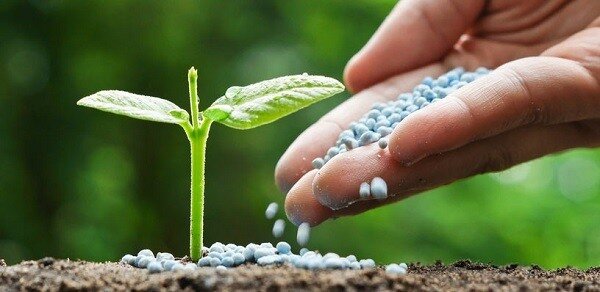River-Friendly Landscaping Part 3: Water Pollution, Be Part of the Solution
It looks like warmer weather is headed our way, and who doesn’t love to visit the Truckee River on a warm summer day? We are so lucky to have a clean river to swim in or picnic by, but we all have to do our part to keep it that way and reduce water pollution. And it starts in our yards.
We’ve talked a bit about non-point source pollution before (check out our Stormwater 101 blog), but when it comes to our yards, there are a few pollutants of concern you can really help reduce: nitrogen and phosphorus.
Nutrients - The Building Blocks of Life
Nitrogen and phosphorus are both nutrients, i.e. the building blocks of life. They are both essential for plant growth (super important for gardeners) and naturally occurring in our environment (nitrogen makes up 78% of our atmosphere). So why are they considered pollutants?
Synthetic Fertilizers
Well, both of these nutrients aren’t always packaged in forms that are readily available for plants in the soil. So to solve this little problem, we have invented synthetic fertilizers that provide these limited nutrients and help our plants to grow, but synthetic fertilizers also comes with some negatives, such as their effects on water quality. Let us explain....
Synthetic fertilizers are super convenient because they work almost immediately after application and you can quickly see the benefits. This leads people to over-using them. You can never have too much of a good thing, right? But actually, while plants definitely need nitrogen and phosphorus, more isn’t necessarily better. Plants can only use the nutrients as quickly as their biological processes allow for them to uptake them. Consider this analogy: When you eat Thanksgiving dinner you can only eat so much and there are always leftovers, right? The same is true for plants. And if you apply more synthetic fertilizer than your plants can use, where do the leftovers go?
You guessed it! They often get washed off (either by rain or sprinklers) into the storm drains, which flow into the nearest waterbody and eventually into the Truckee River.
Algae Blooms
When all those leftover nutrients flow into waterways, they become food for algae. The algae use those nutrients to grow very quickly (i.e. an algae bloom).
When the algae use up all the nutrients, they die off and decompose. There’s only so much oxygen to go around in aquatic environments, and the bacteria that decompose the dead algae use lots of oxygen. This leads to eutrophic conditions, where there’s not enough dissolved oxygen for other aquatic life. This can cause fish and other aquatic animals to die.
Oh No!!!
So what can we do? What is the solution to this water pollution?
Follow Instructions
First and foremost, just make sure you follow the instructions on synthetic fertilizers. It’s super important to only apply the minimum amount your plants need. More is not better!
Test Your Soil
It is also a good idea to test your soil before applying synthetic fertilizers. This will help you determine exactly what your plants need so you don’t use more than necessary. Soil chemistry can be complicated, so it’s really better to know what you’re starting with before you apply chemicals. You can contact the University of Nevada Cooperative Extension horticultural staff for more information (775-784-4848).
Use Organic Fertilizers
The other thing you can consider is organic fertilizers, such as compost. They release nutrients into the soil at a much slower rate and are not as likely to contribute high loads of nitrogen and phosphorous to waterways. And if you compost your yard trimmings and food scraps at home, you also help reduce the amount of waste we send to the landfill (that's a win-win!).
Maintain Your Irrigation System
A properly maintained irrigation system helps keep water in your yard and keeps excess fertilizers out of the storm drain. Look for free Truckee Meadows Water Authority irrigation maintenance workshops and classes offered throughout the year. If you’re looking to hire a professional, consider a QWEL certified landscaping company. They go through an extensive UNCE training program in water conservation and irrigation installation and maintenance.
Buffer Planting
Lawns benefit from fertilization in Northern Nevada because we have soils lacking in organic matter. So if you want to have a lawn, carefully consider its placement. It’s best to locate grass away from hard surfaces like driveways and sidewalks where water can easily runoff and carry pollutants into the storm drain. Consider buffer planting with low-growing shrubs or perennials between your lawn and these hard surfaces. This can do a lot for keeping water and synthetic fertilizers onsite.
Consider Using Drought-Tolerant and Native Plants
Drought-tolerant and native plants don’t require as much fertilization as lawns, so wherever you can, try incorporating them into your garden. There are lots of different options to choose from! For example, there are lots of penstemons that grow in Nevada (51 in fact!), and even the much-loved sunflower (Helianthus sp.) uses less water and fertilizers than lawn grasses. You can use the Truckee Meadows Landscape Guide to find even more options.
With just these few strategies, you're well on your way to being part of the solution to water pollution!






